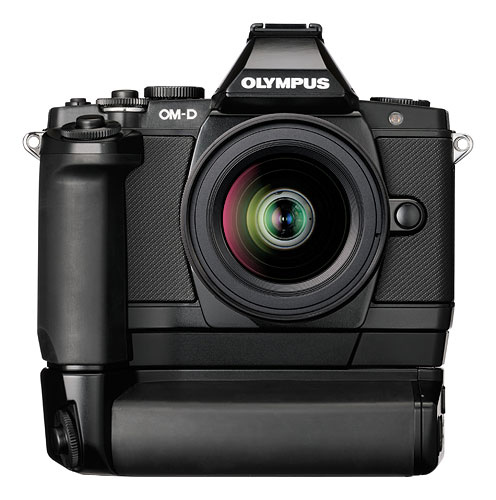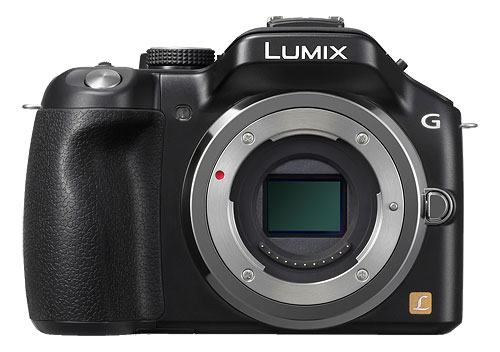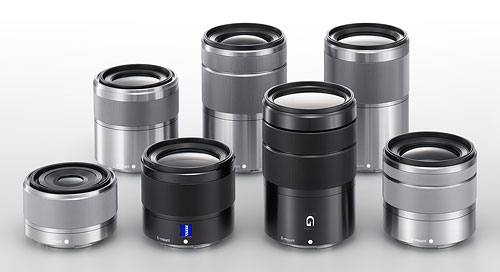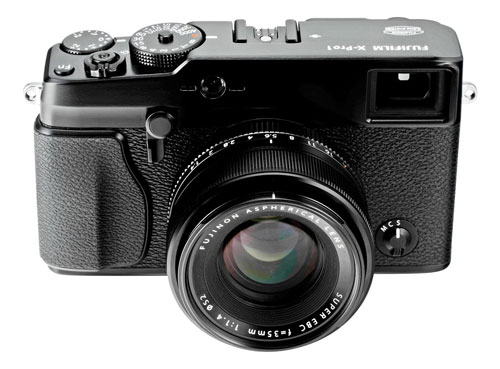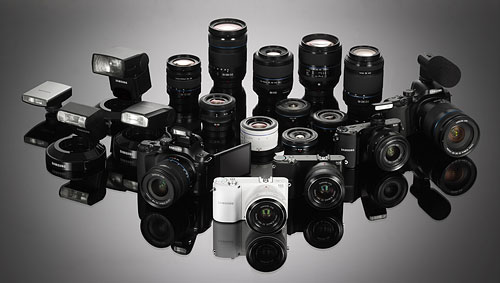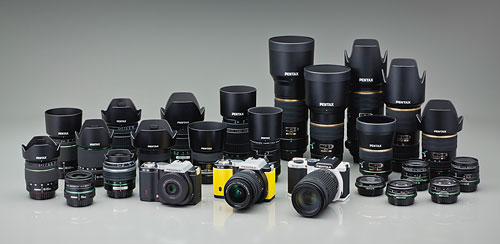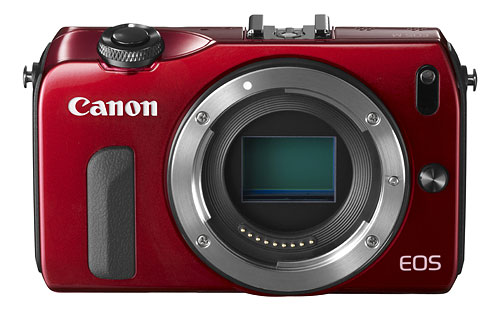Mirrorless, Mirrorless on the Wall: Part II
posted Friday, August 24, 2012 at 11:25 AM EDT
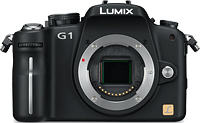 And Now Some Meaningless Speculation...
And Now Some Meaningless Speculation...
These are simply my observations and speculations. I have absolutely no real information about any manufacturer’s plans. If I did, I would have to sign a non-disclosure agreement, and couldn’t write this stuff. But I like to speculate. It’s sort of like playing Fantasy Football with camera manufacturers.
I’m going to split this up by the various players. To me the most impressive and enjoyable thing in this entire area is that there is a lot of variation. The companies are really trying different things. Not all of them are going to work out, of course, but some of them may provide us some really new and different tools to work with.
Micro Four Thirds
As the most mature of the mirrorless formats, Micro Four Thirds may be the most interesting at the moment. For the next year or two, at least, Micro Four Thirds has the better lens lineup. In the long run the advantage of larger sensors might give other makers an advantage. Or maybe not. Advances in sensor and camera technology certainly seem to have kept MFT in the ballpark so far.
I expect Micro Four Thirds companies to be the first to price bodies more aggressively to win market share. Both manufacturers have introduced high-end lenses, so the classic model of ‘get the new consumer and they’ll upgrade through the system’ begins to make sense. Panasonic may be the more aggressive of the two simply because of the image stabilization situation. A Panasonic camera owner has incentive to buy Panasonic lenses with in-lens stabilization. An Olympus camera owner has less incentive to buy Olympus lenses since all lenses use the in-camera stabilization when shot on Olympus.
The ‘stay with your brand’ lens trend gets a bit more of a boost because these two makers also seem the most aggressive about putting firmware distortion correction (and who knows what else) into their cameras for their own lenses. Those who shoot JPEGs already can tell the difference. All other things being equal, using a lens by the same manufacturer as the camera shows less distortion in a lot of cases. I’m OK with this in JPEGs, but I’m not enthusiastic about doing it to my raw images. I’ll handle that myself, thank you.
I have some vague hope that this may lead to built-in lens adjustment and correction for things other than distortion and chromatic aberration. I’m not certain that it would be practical to correct coma distortion in-camera, for example, but it would be cool if they could. With or without more correction, though, I expect we’ll continue to see that Olympus lenses give better results on Olympus bodies than on Panasonic bodies. And vice-versa. It’s not a big deal, but all other things being equal, it’s a consideration.
So I think the Micro Four Thirds format remains the more popular of the mirrorless formats for the next year or two. Panasonic and Olympus continue their quiet infighting to keep their own customers ‘brand specific’ while they present a smiling ‘united Four Thirds consortium’ public face. This should be more fun than the early seasons of Survivor.
NEX
The NEX cameras are the smallest and arguably the coolest of the mirrorless group. As I’ve written before, Sony is the 500-pound gorilla of sensor technology, so I expect NEX cameras will continue to lead in... well, let’s call it potential image quality. I’ve given up all hope, though, that they will ever understand the same principal that’s applied to the best quality photography for 170 years now hasn’t changed: It’s mostly about the lenses.
NEX fanboys, go ahead and line up to slam me now: The NEX lens lineup currently consists of two reasonably good primes, one excellent but overpriced Zeiss-branded prime, and various flotsam and jetsam. Thom Hogan clearly pointed out Sony’s emphasis: they’ve now announced seven NEX cameras to go with their seven NEX lenses. 2011 and 2012 obviously have been the year of the X in the camera world--like everyone agreed to have a date code on their gear. Sony’s letter should be Y. Like... Y can’t you make some lenses?
With those superb cameras and that awesome peaking filter that makes it so easy to manually focus, Sony must be the most popular company in the camera business right now. I’m sure Sony is making decent profits on their NEX cameras, but I suspect other companies are making even more profits selling things that go in front of NEX cameras.
For example, Sony charged me $700 for an excellent NEX-5n camera. Novoflex charged $267 for a simple adapter to let me shoot M-mount lenses on it. Who do you think made the most profit on my NEX purchases? At last count I can buy adapters to shoot 11 different lens mounts on an NEX. (Just search for ‘NEX adapter’ at B&H. You get 6 pages of listings.) We see it here at Lensrentals, too. We rent more adapters for NEX cameras than we do NEX lenses.
The positive outcome of this for NEX shooters is that the third-party lens manufacturers may end up rescuing the NEX lens lineup. The Sigma 30 and 19mm primes are about as good as any native mount lenses available for NEX cameras at an awesome price. (Micro Four Thirds shooters greeted those same lenses with “Yawn... more good primes... yawn”.) Tamron and Tokina apparently are jumping on board, too.
The logical outcome would be that Sony realizes other companies are making good money putting lenses in front of NEX cameras, comes out with a broad lineup of good lenses, and dominates the mirrorless market. But I just used the words ‘logical’ and ‘Sony’ in the same sentence, which is never a good idea. So my guess is that Sony continues to make great cameras, and in 2013 Zeiss announces their ZNEX line of lenses. You heard it here first!
Fujifilm
I put Fuji next just because they seem to be the anti-Sony. They made certain to have a few decent lenses available when they introduced the X-Pro1, and they put out a very specific road map about exactly what is coming and when. (Sony doesn’t have a roadmap; they have a smoke-and-mirror graph.) Instead of tiny, ultra-modern looking cameras they went to great pains to make a larger-than-necessary, classic design body.
For that matter, Fuji is sort of the ‘anti-’ company in general. Everyone else is making small, interchangeable lens cameras. We’ll make fixed-lens cameras with SLR-sized sensors. Everyone else makes tiny, modern looking interchangeable lens cameras. We’ll purposely make ours big and retro. Everyone else uses Bayer arrays; let’s invent a different array.
I like that ‘let’s do what no one else is doing’ philosophy. They drew the line at letters, though. Everyone else has an X, so Fuji had to have an X, too. They didn’t dare to be too different.
Unfortunately, Fuji took being different a step too far with ‘everyone else’s cameras has good autofocus, let’s make one that can’t very autofocus very well’. I love the X-Pro1 actually. I like the lenses they brought out with it, but if I need to manually focus I’d rather shoot Zeiss or Leica lenses on an adapter. I had hoped there would be a firmware upgrade to fix the AF, but it now seems we’ll have to wait for the X-Pro2 to see if Fuji can do AF.
Don’t get me wrong, the camera is usable and makes very nice images. But if you’re the most expensive camera in your class, ‘almost as good as the others’ doesn’t cut it with most people. On the other hand, a core of very serious photographers are snapping up X-Pro1 systems and are very, very happy with them. I didn’t care for it myself, but seeing the images people are making with it, there’s no question it’s an excellent system.
I find it difficult to make a Fuji prediction. It looks like they are aiming to be the ‘high-end’ mirrorless system. (Maybe it’s no coincidence they designed their camera to be the same size as an M9.) But every Fuji release has left me thinking, “Who would have expected that?” So I expect Fuji will do something I don’t expect them to do.
Samsung
The Samsung NX system is easy to sum up: Really good camera. Really good lenses. Horrid marketing with a poor grasp of what serious photographers are interested in. If you go to their current website you can see a badly-underexposed-on-confusing-mirror-surface picture of a bunch of lenses and cameras (I’m sure my ‘underexposed’ is their ‘cutting edge artsy’, but I’d like to be able to see more than the silhouette of the lenses).
I had to search around the website for quite a while find any information about the lenses, though. It turns out they’re tucked in the ‘accessories’ section with camera cases, add-on microphones, and such. It’s a shame, really, because lenses could be the strongest selling point of this system. I suspect marketing is easier to fix than autofocus systems, though, so hopefully they’ll get things together.
Samsung’s future in mirrorless simply comes down to whether they want to be a player or not. If they do they’ll be a very major player. Samsung is a huge company with incredible resources. They’ve got a very good camera and very good lenses already. They’ve got tons of sensor patents, including a lot for back-illuminated sensors, that should keep them on the cutting edge for upcoming model releases.
Since absolutely no one knows about them, just a touch of reasonably good marketing could grab them a significant market share. (I think ‘good camera marketing’ is probably an oxymoron. But sooner or later someone is bound to do it by accident.) On the other hand, their Chairman might forget they even have a camera division and it all might fade away.
I have this bizarre scenario rattling around in my head like a bad dream: Samsung settles their patent lawsuit with Apple by giving them the camera division. Apple then buys Sony, and in no time at all we have Apple-branded NEX cameras with Apple-branded Samsung lenses in front and a retina display LCD on the back. The resulting camera would make the $1799 Fuji X-Pro look like a bargain. And I’m not sure I’m ready for an all-chrome-and-glass camera with no buttons that you control by waving your hand over the LCD to select the AF point, blinking to change the aperture, and wiggle your nose to snap the picture. Not to mention you’d have to buy the f/2.8 app if you want to shoot wider apertures than f/4.
OK, back to reality. My best guess is Samsung continues to make an excellent camera system that not many people know about. As the mirrorless market grows, I could see Samsung NX becoming the ‘cult system’ of mirrorless--not as widely popular as the others but with a deeply committed user base that absolutely love it. I probably would have joined the cult myself except for my desire to shoot some Leica lenses on adapters. (Because their flange-to-sensor distance is a bit longer than most mirrorless cameras, the Samsung system can’t be adapted to Leica-M lenses.)
Pentax / Ricoh
Speaking of cult systems, this marriage should be interesting. Ricoh has definitely done some very different things with cameras with the GXR series. They are obviously interested in the market, or they wouldn’t have bought Pentax. For the moment, at least, we’ll consider the Pentax K-01 as their mirrorless entry, but some would consider the Ricoh GXR system a member, too.
The K-01, though, brings a whole new concept to mirrorless. It doesn’t change the lens mount and backfocus distance at all from the standard Pentax K-system SLR. This has one obvious disadvantage; the camera will remain thicker than its competitors. The K-01 is 2.3 inches thick and weighs 17 ounces, compared to the NEX-7′s 1.7 inch thickness and 10 ounce weight. The lenses are going to be a bit larger, too.
The obvious advantage, of course, is immediate access to a huge and excellent lens lineup. The K-01 can shoot more lenses with autofocus in native mount than all of the other mirrorless systems combined.
A couple of less obvious advantages to such a system are worth mentioning. While Pentax doesn’t currently offer any full-frame cameras, most of the Pentax lenses are capable of covering a full frame. The newer Pentax cameras are using Sony sensors; so full-frame sensor technology is available to them if they want it. And the flange-to-sensor distance of the K-01 (45.46mm) is similar to that of existing full-frame cameras, meaning sensor microlens arrays probably would not need to be changed significantly. Just a thought.
The second advantage is perhaps less obvious, but even more interesting. It goes back to something I mentioned in Part I: Mirrorless systems cost a lot less to make. Let’s assume that on-sensor phase detection AF soon becomes as fast and effective as the current separate-sensor phase detection AF. That, and a good electronic viewfinder might eliminate most of the advantages of SLR cameras.
Pentax has a small but very loyal group of users who love their lenses. Pentax hasn’t been growing SLR market share for some time now. Perhaps Pentax is going to migrate their entire system to a mirrorless format. The top end cameras would have built in viewfinders and high-end phase detection AF on their sensors. They would only be slightly smaller than current SLRs but would cost significantly less to produce. Entry-level cameras would be smaller, have no viewfinder, and throw in a small built-in flash.
The entire lineup, in other words, would be mirrorless, with no SLRs left. Depending on their preferences they could price the cameras lower than competitors SLRs and draw users into that huge lens lineup. Or they could price them similar to competitors SLRs and be more profitable.
Nikon
I was tempted to say Nidak, because I think Nikon is doing a bit of a Kodak. In part I, I mentioned that it would be awfully tempting, if you depended on cameras for the largest portion of your revenue, to try hard to keep the status quo. Certainly Nikon has done everything possible to make certain that no one who was remotely interested in purchasing an SLR would consider their mirrorless offering as an alternative. Sort of like Kodak developing the first digital cameras and going “get away from that, film is where the money is!!”
Before you go all fanboy on me, I do understand Nikon is in possibly the most difficult position of any of the manufacturers. Camera phones are eating up point-and-shoot sales, so Nikon is getting hurt there. They don’t have an electronics, medical imaging, or even large video imaging division to help them out. SLR cameras and lenses are where their business lives and breathes. On top of that they’ve taken some major production hits between flooding and tsunamis. They deserve all the credit in the world that they’re still thriving.
It’s totally understandable, having withstood all that, that Nikon would be very conservative. They’ve positioned their mirrorless offering to hopefully keep the top-end point-and-shoot customer while making absolutely, positively certain that no one considering one of their SLRs would buy their mirrorless camera instead. It’s probably no coincidence that Nikon currently offers more ‘consumer level’ SLRs than anyone: D3100, D3200, D5100, D7000, and D90s are all available, creating hundreds of ‘which camera do I buy’ threads on various forums.
On the positive side, Nikon clearly markets the J1/V1 as point and shoot upgrades, not as a near-SLR cameras. The formula seemed to work, and they sold well, at least initially. But they certainly aren’t competing with most of the other cameras in this discussion, and I see no signs that Nikon plans to do so in the future. Personally I think the old saying, “If you don’t eat your own lunch, someone else will” applies. But perhaps Nikon has positioned themselves perfectly and this mirrorless camera fad will pass away.
Canon
Well, this is really presumptuous of me. Canon has barely announced the EOS-M system, only a few preproduction models have been reviewed, and here I am making predictions. I guess my summary would be that Canon hasn’t buried their head in the sand totally, but they certainly aren’t taking an ultra-aggressive approach either.
I give them kudos for using an APS-C sensor; I had feared it would be a G1X upgrade. In fact, they’ve basically crammed a T4i into a mirrorless camera, which is a good thing, as the T4i is a nice camera. EOS-M appears to be a good video platform that may give the Panasonic GH2/ GH3 a run for mirrorless video dominance. And while it looks a bit boxy, they’ve made it quite small--less than 10 ounces and 1.27 inches deep. That’s a bit lighter but roughly the same size as an Olympus OM-D.
So Canon has released a mirrorless camera nearly as capable as its entry-level SLR. That’s pretty aggressive in one way. It’s pretty conservative in another — I bet development costs were a lot lower than bringing out a whole new system. I’ll also bet there was a parallel development going on in-house around the G1X sensor, so I doubly applaud the larger sensor choice for their mirrorless release.
Canon is filing on-sensor phase detection patents right and left. They’ve made this a win-win situation, too. Canon is aggressive about video and on-sensor phase detection is a video advantage that will certainly make its way to other cameras.
So it seems we’ve got Canon being Canon: not taking a huge risk, investing in research that could have multiple uses, and carefully differentiating this product from that product. There is no option for adding an electronic viewfinder on the T4i, for example, so it’s clearly not going to eat the T4i’s lunch completely.
The lack of lens options puzzles me a bit, though. It may be that more lenses are right around the corner. The recent 40mm pancake made me first think that some ‘co development’ might be going on in the lens division, too. But then it occurred to me that maybe ‘not too huge on an adapter’ might be enough to get people to use the new, small primes Canon just released on the EOS-M. Wouldn’t that be convenient? People would already have a few lenses if they decide to move up to standard SLRs.
So maybe all we’ll see is a limited native lens lineup, some push to use smaller SLR lenses on adapters, and move up when you’re ready. I hope not. I don’t think that formula works, even if the native lenses are fairly small.
My thoughts are that Canon will be Canon: careful, thorough, conservative, perhaps even boring, but excellent. They’ll dip their toes into this market, let others take the big risks, and then catch up with whatever becomes most successful. They’ll snap up some market share for certain, especially among users invested in Canon lenses and among those wanting strong video capabilities. The only thing I see really differentiating them might be a better phase-detection AF system than the other mirrorless cameras. But better autofocus is always a very arguable thing when comparing brands.
Summary
In case you can’t tell, I’m enjoying the whole mirrorless camera development thing immensely. In the SLR world a big announcement is a new Nikon or Canon lens, a new camera with a few more megapixels, or results that show the newest camera has an extra 0.3 stops of dynamic range.
Over on the mirrorless side, entirely new camera systems are being released. The number of lenses available for a given mount can double in a year’s time. When a new lens comes out for your format, you aren’t wondering if it’s much better than the one it replaced because it didn’t replace anything; it’s an entirely new option.
Right now, mirrorless is where the innovators live. They’re taking big risks that the ‘old school’ camera companies can’t do.
A lot of you will think I’ve been very negative about Canon and Nikon. I have, really, but that’s because I like them. I don’t want the true camera companies to find out in a decade their technology is behind the times, their average user is 60 years old, and their lenses are bought more by collectors than active photographers.
Don’t think it could happen? Go research who the dominant camera makers of the 1960s, 1970s, 1980s, etc. were. Canon and Nikon are just the most recent leaders. A decade ago, the video world had barely heard of RED. Now Canon, Sony, Panasonic and all the others are trying to catch up to them.
Canon and Nikon currently have the largest R&D departments and better control of their own destiny (their camera divisions are major parts of the company, not afterthoughts). But with most of the innovation coming from the other guys, the inevitable will happen eventually. Someone is going to eat their lunch for them, unless they eat their lunch themselves.
The answer seems rather simple. Set up an autonomous mirrorless division with their own budget and tell them to go dominate the mirrorless market. Tell them to not give a damn about taking market share from the company’s SLRs. Do that, and the resources and knowledge that Canon or Nikon have available could create some amazing new cameras.
But if they have to get everything approved in the boardroom, corporate infighting and turf protection will make certain they develop a camera that offends no other section of the company. And that will mean they’ve created cameras that don’t worry any other company. They’ll still probably dominate the SLR market for the foreseeable future. But right now, at least, that doesn’t seem to be where the growth is.
(Roger Cicala is the founder of LensRentals.com. Visit LensRentals.com to check out that cool lens you've been hankering for, and for some of the best customer service on the Internet!)
